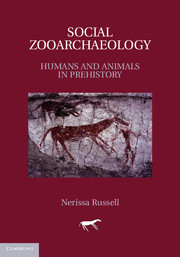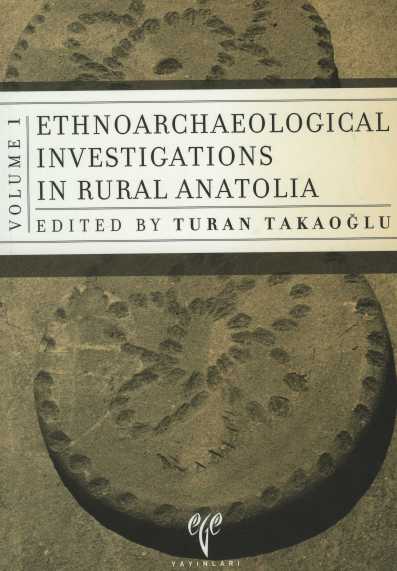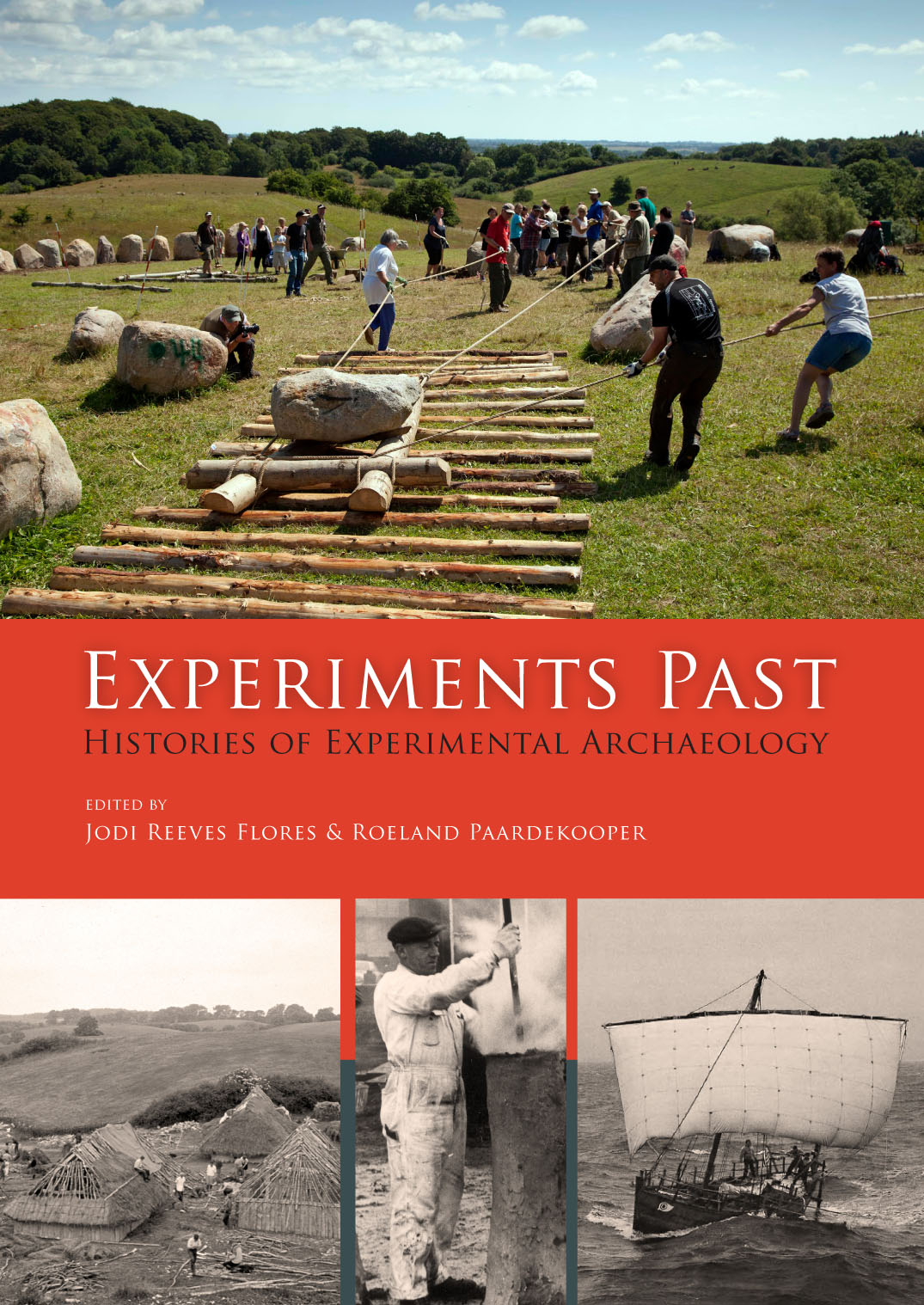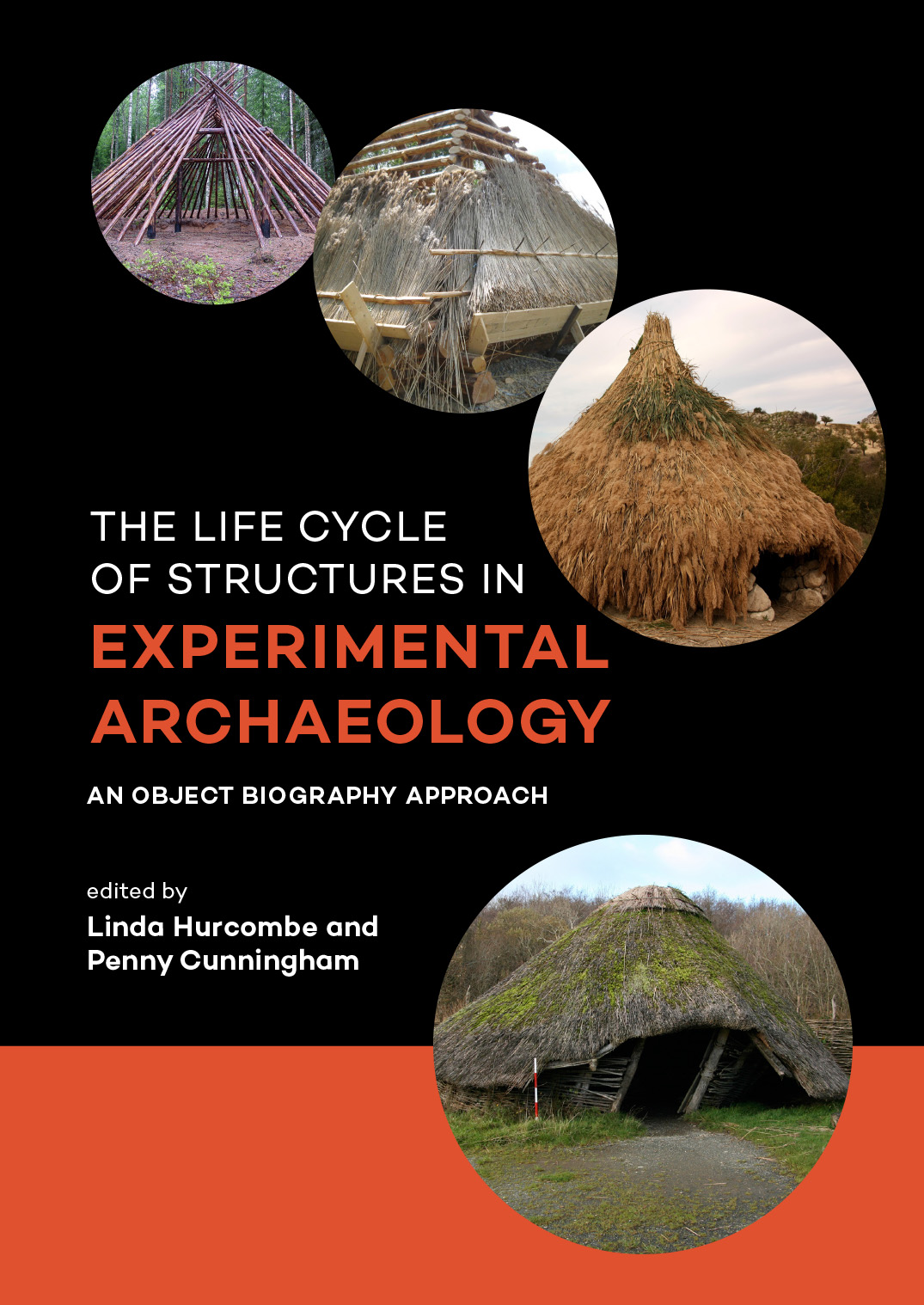Books on Archaeology
Discover librarian-selected research resources on Archaeology from the Suna Kıraç Library Collection.
-
-
Archaeological Human Remains by
Call Number: CC79.5.H85 A73 2014ISBN: 9783319063690Publication Date: 2014-07-01 -
Archaeology and Apprenticeship by
Call Number: CC79.A85 A73 2012ISBN: 9780816533626Publication Date: 2016-05-01 -
Archaeology in Situ by
Call Number: DF78 .A645 2010ISBN: 9780739132340Publication Date: 2010-03-25 -
 Explanation in archeology : an explicitly scientific approach
by
Call Number: CC75 .W38 1971
Explanation in archeology : an explicitly scientific approach
by
Call Number: CC75 .W38 1971 -
-
-
-
Uncovering the Past: a history of archaeology by
Call Number: CC100 .S75 1993ISBN: 0879757647Publication Date: 1993-02-01 -
The Oxford Handbook of the Archaeology of the Levant C. 8000-332 BCE by
Call Number: DS56 .O94 2014ISBN: 9780199212972Publication Date: 2014-03-15 -
The Oxford Handbook of the Archaeology of the Contemporary World by
Call Number: CC75 .O94 2013ISBN: 9780199602001Publication Date: 2013-12-10 -
The Oxford Handbook of Public Archaeology by
Call Number: CC135 .O94 2012ISBN: 9780199237821Publication Date: 2012-02-20 -
The Oxford Companion to Indian Archaeology by
Call Number: DS418 .C54 2006ISBN: 9780195673425Publication Date: 2006-10-19 -
 In the Beginning: : an introduction to archaeology
by
Call Number: CC75 .F34 1994ISBN: 0673523357Publication Date: 1994-01-01
In the Beginning: : an introduction to archaeology
by
Call Number: CC75 .F34 1994ISBN: 0673523357Publication Date: 1994-01-01 -
 Principles of archaeology
by
ISBN: 9780500293614
Principles of archaeology
by
ISBN: 9780500293614 -
Handbook of Archaeological Theories by
Call Number: CC72 .H36 2008ISBN: 9780759100329Publication Date: 2007-11-09 -
Archaeological Fantasies by
Call Number: CC175 .A7155 2006ISBN: 9780415305938Publication Date: 2006-02-15
Books On Different Sub fields of Archaeology

Archaeology involves reconstructing history with the help of material remains. It is a stimulating job of interpreting material culture in human terms. It involves both, toiling hard in the field as well as formulating hypotheses in the laboratory/study. An archaeologist has to be, therefore, extremely well-versed in other disciplines which archaeology encompasses, that include history, anthropology, and other social and general sciences. It is thus a subject having a multidisciplinary approach, wherein every small thing matters.
Types of Archaeology
♣ On the Basis of Nature of Work
♣ On the Basis of Time Period or Region of Study
Archaeology is of several types, and each demands either specific or multiple specializations. The various kinds of archaeologies have been classified into two categories, viz., on the basis of the nature of work that is involved, and on the basis of historic time periods.
On The Basis Of Nature Of Work
Archaeology has been categorized into various types on the basis of nature of the work involved in the process of data collection and analysis. This depends to a large extent on where an excavation or an exploration is taking place, and with what point of view an archaeologist wants to interpret history.
On The Basis Of Time Period or Region of Study
Apart from these main kinds of archaeologies, the discipline has also been divided into various kinds on the basis of historical time periods. This classification is in order to ease the process of assigning peculiar characteristics to the finds of a particular era, a particular dynasty, or a particular region.
Environmental Archaeology
Environmental archaeology deals with the study of interrelationship between the ancient people and their natural environment. It involves three sub-disciplines of archaeology, viz., zooarchaeology that deals with the study of ancient animal remains, geoarchaeology that deals with the study of soil, sediments, rocks, natural deposits, etc., and archaeobotanythat studies ancient plant remains. Environmental archaeology answers questions relating to the kind of natural habitat that the ancient people were surrounded by, the plants and animals living in that age, varieties of wild and cultivated crops, animals that were hunted and those which were domesticated, species of plants and animals that are now extinct, climatic changes that took place over a period of time, and the effects that the changes in natural environment had on the lives of the people and on their subsequent disappearance. Environmental archaeology encompasses field studies along with laboratory experiments.
-
 Environment and archeology : an ecological approach to prehistory
Call Number: GN741 .B84 1971
Environment and archeology : an ecological approach to prehistory
Call Number: GN741 .B84 1971 -
Reconstructing Past Population Trends in Mediterranean Europe by
Call Number: HB3632.7 .R43 1999 v.1ISBN: 1900188627Publication Date: 1999-12-01
Zooarchaeology
Zooarchaeologists (also known as archaeozoologists) analyze animal remains from archaeological sites. The field traces its roots to the nineteenth century when major questions focused on the origins and antiquity of life. Through this historical association, zooarchaeology shares research traditions with anthropology, ecology, paleontology, and zoology. The combination of anthropological, archaeological, biogeochemical, ecological, and paleontological theories and methods to the analysis of animal remains defines zooarchaeology.oxfordreference
-
-
 Social zooarchaeology : humans and animals in prehistory
by
ISBN: 9781139190374
Social zooarchaeology : humans and animals in prehistory
by
ISBN: 9781139190374 -
Zooarchaeology and field ecology : a photographic atlas by
ISBN: 9781607814863
Bioarchaeology
Influenced by the New Archaeology and the tradition of US four-field anthropology, Buikstra 1977 outlined a bioarchaeology that emphasized the need to generate and solve research questions about past human populations, in contrast to the strongly descriptive skeletal studies that had been done in previous eras of American archaeology. Within the United States, the term “bioarchaeology” caught on as a way to describe the study of human skeletal remains from archaeological sites. In the United Kingdom, bioarchaeology sometimes refers to the study of all or a subset of biological remains (human, animal, and plant) and may be interchangeable with the term “osteoarchaeology.” Although the definition of bioarchaeology is still quite broad in much of the world, this bibliography employs the denotation of the term common in the United States, where bioarchaeology deals with human skeletal remains, zooarchaeology deals with faunal remains, and palaeoethnobotany deals with plant remains.oxfordbibliographies
-
The Bioarchaeology of Ritual and Religion
ISBN: 9781785708299 -
Remembering the Dead in the Ancient near East by
Call Number: DS56 .R45 2014ISBN: 9781607323242Publication Date: 2014-10-15 -
Ethnoarchaeology
Ethnoarchaeology is the science that deals with the ethnographic investigation of living communities in order to acquire knowledge of the past. It involves the application of anthropological methods to a large extent. By using ethnoarchaeological techniques, archaeologists, in a way, attempt to link the past with the present. They try to understand how the ancient people in a given region may have lived, keeping as their basis, the tangible and intangible culture of the modern communities. One can get valuable insights into ancient social structures, religious and cultural beliefs, technology, etc., by applying the principles of ethnoarchaeology. But, the link between modern and ancient societies is of course still very ambiguous. This is because, even if two societies share some common traits, they may be distinct from each other in many aspects, which tend to change by default over a period of time. Nevertheless, studying advanced techniques of modern communities may help to a certain extent to provide an insight into the rudimentary techniques, which may have been used by the ancients.
-
Ethnoarchaeology of Anatolia: Rural Socio - Economy in the Bronze and Iron Ages by
Call Number: CC79.E85 Y35 2000ISBN: 9652260116 -
 Ethnoarchaeological investigations in rural Anatolia
by
Call Number: DS155 .E84 2004ISBN: 9789758071845
Ethnoarchaeological investigations in rural Anatolia
by
Call Number: DS155 .E84 2004ISBN: 9789758071845 -
Ethnoarchaeology in Action by
Call Number: CC79.E85 D38 2001ISBN: 0521667798Publication Date: 2001-07-26
Landscape Archaeology
Landscape archaeology is a broad division in archaeology that deals with the study of the various changes that take place in different landscapes, both naturally as well as due to human intervention. On the basis of this, landscapes have been classified into natural and cultural landscapes, for archaeological purposes. The study of how landscapes and natural habitats are interlinked with human behavior and cultural changes is actually very extensive. There are a variety of changes that landscapes may undergo over a period of time. These include natural changes with respect to topography, climate, soil, natural calamities such as floods, landslides, tsunamis, rivers changing their courses, and so on, and human induced changes such as agriculture, industrial and construction activities, clearing of forest areas, etc. Interestingly, the methods in landscape archaeology are also used in order to analyze inequalities that may have prevailed in a social structure at a given period of time.
-
Landscape Archaeology As Long-Term History by
Call Number: DF901.K43 C48 1991ISBN: 0917956729Publication Date: 1991-12-01
Household Archaeology
Household archaeology is a comparatively recent development in archaeology that happened between the late 1970s and early 1980s. It involves a small-scale excavation within a given area on an archaeological site. It considers every single household as a unit that not only portrays the social, cultural, economic, and political sensibilities of the people of a particular household/family, but also throws light on the affiliations of the society on the whole. Household archaeology is also helpful in studying aspects of secular art and architecture, food habits of the people, their religious beliefs, and so on. Gender classification in the social order is an interesting aspect that can be studied by this kind of archaeological method. Variety of evidences are taken into consideration in the study of household archaeology, which include vegetal and faunal remains, pottery, processes of site formation, etc.
-
Household Archaeology in Ancient Israel and Beyond by
ISBN: 9789004206250Publication Date: 2011-05-01 -
Underwater Archaeology
This is also known as marine archaeology or maritime archaeology. It is associated with the study of underwater evidences such as shipwrecks, water-buried cities, and other inundated archaeological sites. It is an expensive branch of archaeology and incurs a much higher cost than any terrestrial archaeological excavation. Knowledge of specific techniques and methods that need to be adopted in order to carry out excavations underwater is a prerequisite. Archaeologists practicing in this field attempt to discover submerged evidences by diving into the deep waters along with sophisticated archaeological tools. An underwater excavation may also turn out to be a little risky at times because one cannot guess what the conditions under the sea would be like. However, it makes an exciting profession for adventure lovers.
-
 SOMA 2008: Proceedings of the XII Symposium on Mediterranean Archaeology, Eastern Mediterranean University, Famagusta, North Cyprus, 5-8 March 2008
by
Call Number: DE60 .S95 2008ISBN: 9781407303925Publication Date: 2009-03-15
SOMA 2008: Proceedings of the XII Symposium on Mediterranean Archaeology, Eastern Mediterranean University, Famagusta, North Cyprus, 5-8 March 2008
by
Call Number: DE60 .S95 2008ISBN: 9781407303925Publication Date: 2009-03-15 -
Maritime Archaeology and Ancient Trade in the Mediterranean by
Call Number: HE872.7 .M375 2011ISBN: 9781905905171Publication Date: 2011-07-15
Aviation Archaeology
Aviation archaeology deals with finding historical remains of aircraft, air-borne weaponry, abandoned air bases or runways, and the like. In short, it deals with everything that has to do with the history of aviation. Sometimes, remains from aircraft crashes are found under the sea, which are eventually recovered, recorded and studied. It is due to this reason that many people consider aviation archaeology as a branch of marine archaeology, but this may only be true to a limited extent. This is because there are also a number of aviation archaeological remains found on land, in which case, it becomes a separate division in itself. Crash sites differ largely in magnitude and remains. The remains range from military remains to civil remnants. Instances of ancient air bases found by aviation archaeologists have also been recorded. As far as the actual professional practice of aviation archaeology is concerned, there may be some legal constraints, which can be overcome through adequate paperwork and permissions.
Aerial Archaeology
Aerial archaeology, as the name suggests, is the investigation of archaeological remains from the air. This is a concept that gained impetus after aerial survey and photography were considered to be important during the two world wars. Archaeologists thought of applying this technique to record the bird's-eye view of archaeological sites, so that they could get a better perspective of the same. Doing aerial surveys also help archaeologists to spot new sites, which otherwise would have been a difficult task, as some things can be better captured from an altitude. Aerial archaeology does not involve actual excavation, which is quite obvious. On the contrary, it involves detailed exploration from an altitude, so that newer sites can be discovered, and the sites which already exist can be recorded from a different perspective. Nowadays, the technique of satellite imagery also forms part of aerial archaeology.
-
 Images of Conflict
by
ISBN: 9781443803144Publication Date: 2009-02-01
Images of Conflict
by
ISBN: 9781443803144Publication Date: 2009-02-01 -
Good Practice in Archaeological Diagnostics by
Call Number: CC76.4 .G66 2013ISBN: 9783319017839Publication Date: 2014-01-17 -
Archaeology and airborne laser scanning of the landscape by
ISBN: 9788026101949
Battlefield Archaeology
Battlefield archaeology, also known as military archaeology, is one of the most intriguing types of archaeologies. It deals with digging up battlefields of the past and recovering evidences relating to military activities, which may have been responsible for subsequent changes in the social, political and economic spheres of the society. Archaeological evidences recovered from battlefields have the capability to alter those historical viewpoints which have been widely accepted and acknowledged. Evidences on such sites include remains of implements of war, skeletal remains, and various artifacts related to military history. These so-called war sites give valuable evidences to events, which took place not only during a given war, but also before and after it, because not only actual battlefields but even military camp sites provide valuable evidences. Also, just as all other sites tell us about how and when people lived, war sites tell us how and when they died. All in all, battlefield archaeology is an engrossing case-study of how written historical accounts can undergo changes when actual material remains relating to the recorded events are uncovered.
Commercial Archaeology
Commercial archaeology is actually a sub-discipline of archaeology, which deals with everything that is related to commerce and trade. This includes evidences with respect to the commodities that were traded and bartered, numismatic finds, ancient forms of transportation that were used for commercial purposes, and so on. The study of ancient trade routes and sea ports, harbors and marketplaces, is also included in commercial archaeology. This is a very gripping study, as it answers questions such as which countries had trade relations and in what commodities, what were the media of exchange between them, how the commodities were transported, who and what all was involved, how they coordinated, etc. Many a time, at commercial sites, ancient inscriptions are found, which are obviously very valuable resources that are used for recording economic histories.
-
 Commercial Amphoras of the Bodrum Museum of Underwater Archaeology : Maritime trade of the mediterranean in ancient times
by
Call Number: NK4623.5.B63 A4713 1995ISBN: 9759587114
Commercial Amphoras of the Bodrum Museum of Underwater Archaeology : Maritime trade of the mediterranean in ancient times
by
Call Number: NK4623.5.B63 A4713 1995ISBN: 9759587114
Industrial Archaeology
Industrial archaeology is another kind of archaeology, which studies the material remains of industrial by-products and artifacts. It does not deal with the movement of goods from one place to another. On the contrary, it deals with the production of goods and the various processes involved in the same. Evidences from industrial sites tell us about the industries that existed during a given period in history, things that were manufactured then, the tools that were used at that time, and attempt to answer queries like what people did other than agriculture (which primarily was the main occupation in many regions), what, where and how did they manufacture, what raw materials were used and where did they get them from, how advanced was their technology, why did they manufacture what they did, and so on. Evidences recovered from such sites generally include those related to activities such as manufacturing, mining, quarrying, milling, building roads and other infrastructure, etc.
-
-
Roads Archaeology and Architecture by
Call Number: HE347 .M85 2005ISBN: 075242887XPublication Date: 2005-01-01
Salvage Archaeology
Salvage archaeology, also known as rescue archaeology, is a name given to an archaeological excavation which needs to be carried out in an emergency and with utmost urgency on threatened sites. Salvage archaeological operations are carried out on sites that are on the verge of being destroyed by new road constructions, dams, buildings, or any other kind of infrastructure development. The duty of the archaeologist then, is to locate as many sites as possible in an assigned area, explore them, and excavate them if deemed necessary, and ultimately record in detail all the finds that have been procured. Generally, in case of salvage archaeology, time is a constraint, and so detailed excavation is difficult to carry out. Therefore, archaeologists tend to record whatever is found on the surface at the time of exploration. But, if it is realized during the exploration that the site holds a prominent place in history, then detailed excavation can be carried out and can thus alter the construction plans in some way or the other.
-
The Oxford Handbook of Public Archaeology by
Call Number: CC135 .O94 2012ISBN: 9780199237821Publication Date: 2012-02-20
Experimental Archaeology
Experimental archaeology is a kind of archaeological study in which archaeologists try to figure out how the archaeological deposits were formed. In the course of this quest, they experiment with various processes, which they think people might have applied in the past in order to make or manufacture all those things which make the archaeological deposit. This experimentation of remaking or replicating things using the methods of the past is the core of the entire concept of experimental archaeology. Archaeological finds ranging from pottery to structures are actually replicated using historical methods, which helps to understand the past technologies as well as the resources available to them. Flint napping or the replication of prehistoric stone tools is an interesting activity practiced in experimental archaeology. This has helped, to a large extent, in understanding the prehistoric habitat and the rudimentary techniques that were used by prehistoric man to make his much-needed tools. It has to be noted, however, that experimental archaeology is related to a large extent to the imaginations of the archaeologists, with regards to the period in question. Because, most of the things, especially structures, are seldom found intact; the replication mostly depends on the perception of the archaeologist.
-
-
 Experiments past : histories of experimental archaeology
by
ISBN: 9789088902529Publication Date: 2014-10-13
Experiments past : histories of experimental archaeology
by
ISBN: 9789088902529Publication Date: 2014-10-13
Forensic Archaeology
Forensic archaeology is a newly developed stream and a very interesting one. It pertains to the use of archaeological techniques in finding evidences on crime scenes. Forensic archaeologists are generally employed by the security services in order to investigate crimes and catch the culprits. Duties of archaeologists in this field of archaeology include collecting evidences like human burials, artifacts, footprints, tool-marks, etc., and trying to figure out the situation in which a particular crime might have happened; and to ascertain the influences on the remains of external factors that may have disturbed the crime scene. They also try to find whether all the remains are in situ, and if not, how and when they landed up where they currently lie. The findings of forensic archaeologists prove to be very effective in the court of law, and help the police to a great extent in the investigation of the occurred crime.
-
Forensic Archaeology and Human Rights Violations by
ISBN: 9780398085193Publication Date: 2007-06-01 -
Archaeology of Religion
Examination of religion as an archaeological phenomenon throughout the ages. How did religion shape material culture and social organization through its institutions and structures? How can we analyze religion to understand and (re) construct ancient societies? Archaeological and historical data from the ancient Near Eastern, Greek and Roman civilizations and religions.
-
Archaeology of Religion by
Call Number: BL65.A72 S74 2009ISBN: 9781598741544Publication Date: 2009-04-30 -
-
Defining the Sacred by
Call Number: BL1060 .D44 2015ISBN: 9781782976790Publication Date: 2015-05-31 -
The Archaeology of Ritual by
Call Number: BL65.A72 A75 2007ISBN: 9781931745482Publication Date: 2007-10-01
Prehistoric Archaeology
Prehistory is the name assigned to the period before the invention of writing. Obviously, there are no written records or historical accounts from the prehistoric age, and so, whatever we know about prehistory is simply through physical archaeological finds. Prehistory has been classified into Palaeolithic, Mesolithic, Neolithic, and Chalcolithic periods, on the basis of the developments that took place over a period of time in the human lifestyles. Prehistory also includes periods before the lithic age (stone age), which preceded the existence of humans. Thus, prehistoric archaeology is actually a vast discipline, and there is a lot of scope for original research, as there are a number of prehistoric mysteries that are to be yet unraveled.
-
 An introduction to pehistoric archeology
by
Call Number: CC165 .H64 1969
An introduction to pehistoric archeology
by
Call Number: CC165 .H64 1969 -
The Prehistory of Asia Minor by
Call Number: AKMED/DS155 .D87 2011 c.ISBN: 9780521149815Publication Date: 2010-11-01 -
The Cambridge Prehistory of the Bronze and Iron Age Mediterranean by
Call Number: GN778.25 .C36 2014ISBN: 9780521766883Publication Date: 2015-01-12 -
-
The Oxford Handbook of Prehistoric Figurines by
Call Number: N5310 .O94 2017ISBN: 9780199675616Publication Date: 2017-06-13
Protohistoric Archaeology
Protohistory is the period that lies in between prehistory and history. Though this is a period that came after the invention of writing, many of the evidences have not been deciphered yet. Protohistory encompasses the bronze age and iron age, and sometimes even the copper age, but this differs from region to region. Dating of this period is a difficult task for an archaeologist, as this again depends on regional and cultural aspects. But, we know from the data available that it was during the protohistoric period that great ancient civilizations of the world sprang up, and the world took its first and prominent steps towards urbanization. Thus, it is an important transitional phase, and sites are loaded with surprising artifacts, which makes protohistoric archaeology an interesting option.
-
Ethnoarchaeology of Anatolia: Rural Socio - Economy in the Bronze and Iron Ages by
Call Number: CC79.E85 Y35 2000ISBN: 9652260116 -
-
-
 Bronze Age environment and economy in the Troad : the archaeobotany of Kumtepe and Troy
by
Call Number: GN778.32.T9 R54 1999ISBN: 3934400019
Bronze Age environment and economy in the Troad : the archaeobotany of Kumtepe and Troy
by
Call Number: GN778.32.T9 R54 1999ISBN: 3934400019 -
Eski Anadolu Toplumunun Arkeolojideki Yansımaları Neolitik ve Kalkolitik Çağ Topluluklarının Sosyo-Ekonomik Yapıları, İnanç Sistemleri ve Teknolojileri by
Call Number: GN776.32.T9 Y3520 2014ISBN: 9789944483612 -
 TAY : Türkiye Arkeolojik yerleşmeleri 6- Demir Çağı
by
Call Number: DR431 .T873 2008ISBN: 9789758070039
TAY : Türkiye Arkeolojik yerleşmeleri 6- Demir Çağı
by
Call Number: DR431 .T873 2008ISBN: 9789758070039 -
 Unutulmuş krallık : antik Alalah’ta arkeoloji ve fotoğraf = the forgotten kingdom : archaeology and photography at ancient Alalakh
by
Call Number: DS156.A47 U58 2014ISBN: 9786055250379
Unutulmuş krallık : antik Alalah’ta arkeoloji ve fotoğraf = the forgotten kingdom : archaeology and photography at ancient Alalakh
by
Call Number: DS156.A47 U58 2014ISBN: 9786055250379
Historical Archaeology
Historical archaeology studies that period of the history of mankind from which we have ample written sources that tell us a huge variety of things. So, historical archaeology involves the study of not only the artifacts recovered from the archaeological sites but also of the documented evidences that have been left behind. Sites relating to historical archaeology are spread across the world in large numbers, and each of these help reconstruct different kinds of aspects of human past, such as industries, trade, art and architecture, social and cultural history, military history, and so on. However, it should be noted that historical records are not always correct, and hence, it should be supplemented with other evidences.
-
 The Oxford handbook of historical archaeology
by
ISBN: 9780191751004
The Oxford handbook of historical archaeology
by
ISBN: 9780191751004 -
-
Historical Archaeology in Global Perspective by
Call Number: CC77.H5 H58 1991ISBN: 087474413XPublication Date: 1991-02-17 -
-
A Historical Archaeology of the Modern World by
Call Number: CC77.H5 O78 1996ISBN: 0306451735Publication Date: 1996-01-31
Classical Archaeology
Classical archaeology is a special branch of archaeology which pertains only to Greece and Rome. It deals with a detailed study of the ancient Greek and Roman civilizations. Classical archaeology not only studies these two civilizations individually, but also in relation to other contemporary civilizations of that period. It also studies the influences of and on other civilizations of the ancient Greeks and Romans. It is a very interesting field of study, but because it pertains to specific regions, is limited in scope.
-
-
-
-
Antik kentler : antik Yakındoğu, Mısır, Yunan ve Roma’da kentsel yaşamın arkeolojisi by
Call Number: HT114 .G3820 2015ISBN: 9786055250522 -
The Makers of Classical Archaeology by
Call Number: DE9.A1 M43 2000ISBN: 1573928267Publication Date: 2000-12-31
Medieval and Modern Archaeology
Medieval archaeology deals with the study of material remains of human culture belonging to the middle ages. Similarly, modern archaeology pertains to the study of the colonial and post-colonial periods in history. Material remains of these periods aid, in most cases, only to establish firmly the facts from the written records of these periods, which are available in large numbers.
There are a large number of people who want to practice archaeology, but are not quite exposed to the field. On the other hand, there are also a large number of people who do not practice it properly and tend to completely ignore or oppose the established hypotheses and theories of archaeologists and historians. This kind of non-scientific and baseless approach to archaeology is known as pseudoarchaeology or cult archaeology, which is sometimes a result of religious fundamentalism. Moreover, a fantastical form of archaeological study related to the physical remains of aliens, known as xenoarchaeology, has also been conceptually put forth by some. However, this cannot be an established mainstream discipline. Nevertheless, archaeology, with its numerous types, becomes an absolutely amazing package.
-
 Uluslararası Katılımlı XVI.Ortaçağ-Türk Dönemi Kazıları ve Sanat Tarihi Araştırmaları Sempozyumu : 18-20 Ekim 2012 : bildiriler = Procedings of the XVIth International Symposium of Medieval-Turkish era Excavations and Art History Researches Cumhuriyet Uni
by
Call Number: N5300 .U49 2012ISBN: 9786054561285
Uluslararası Katılımlı XVI.Ortaçağ-Türk Dönemi Kazıları ve Sanat Tarihi Araştırmaları Sempozyumu : 18-20 Ekim 2012 : bildiriler = Procedings of the XVIth International Symposium of Medieval-Turkish era Excavations and Art History Researches Cumhuriyet Uni
by
Call Number: N5300 .U49 2012ISBN: 9786054561285 -
Archaeology and the Cities of Asia Minor in Late Antiquity by
Call Number: DS155 .A73 2011ISBN: 9780974187358Publication Date: 2012-12-31 -
The Archaeology of Byzantine Anatolia by
Call Number: DR431 .A69 2017ISBN: 9780190610463Publication Date: 2017-04-14 -
Asar-ı Atika : Osmanlı İmparatorluğu’nda arkeoloji siyaseti by
Call Number: RCAC/AM79.T8 C4520 2016ISBN: 9786059389174 -
Geçmişe Hücum: Osmanlı İmparatorluğunda Arkeolojinin Öyküsü, 1753 - 1914 by
Call Number: CC13.T9 G32 2011ISBN: 9789944731263 -
-
 Scientific Methods in Medieval Archaeology
by
Call Number: CC75 .C59 1967ISBN: 0520016262Publication Date: 1971-01-01
Scientific Methods in Medieval Archaeology
by
Call Number: CC75 .C59 1967ISBN: 0520016262Publication Date: 1971-01-01 -
Archaeology and History in Roman, Medieval and Post-Medieval Greece by
Call Number: DF741 .A73 2008ISBN: 9780754664420Publication Date: 2008-10-28 -
-
Archaeology of the Countryside in Medieval Anatolia by
Call Number: DR431 .A734 2009ISBN: 9062583245Publication Date: 2009-12-31 -
Archaeology Matters by
Call Number: CC165 .S23 2008ISBN: 9781598740899Publication Date: 2008-03-15
Introduction to the ancient civilizations of Anatolia. Important human social developments in the prehistoric periods, such as the establishment of first temples in the world, origins of agriculture, emergence of cities, extensive use of metals and long-distance, international trade.
-
The Archaeology of Anatolia by
Call Number: DS155 .S43 2015 v.1ISBN: 9781443878159Publication Date: 2015-09-15 -
-
-
Anatolian Interfaces by
Call Number: DF787.T8 I58 2004ISBN: 9781842172704Publication Date: 2008-11-28 -
 Anatolia : before c. 4000 B.C. and c. 2300-1750 B.C.
by
Call Number: RCAC/DR431 .M461 1967
Anatolia : before c. 4000 B.C. and c. 2300-1750 B.C.
by
Call Number: RCAC/DR431 .M461 1967 -
Insights into Hittite History and Archaeology by
Call Number: DS66 .I575 2011ISBN: 9789042921368Publication Date: 2011-03-28 -
Küçük Asya'nın tarihöncesi : karmaşık avcı toplayıcılardan erken kentsel toplumlara by
Call Number: DS155 .D8720 2016ISBN: 9786059389037
Archaeology of the Ancient Middle East
Examination of the first cities and states in the world and the earliest written records of human history. Study of the civilizations of the Sumerians, Akkadians, Babylonians and Assyrians through archaeological remains and historical sources.
-
Sumer and the Sumerians by
Call Number: DS72 .C73 2004ISBN: 0521825962Publication Date: 2004-09-16 -
 Akkad : the first world empire : structure, ideology, traditions
by
Call Number: DS73.1 .A42 1993
Akkad : the first world empire : structure, ideology, traditions
by
Call Number: DS73.1 .A42 1993 -
The Assyrians and the Babylonians by
Call Number: DS69.5 .R59 2007ISBN: 8854402680Publication Date: 2007-09-25 -
A History of the Ancient near East by
Call Number: DS62.2 .V36 2004ISBN: 0631225528Publication Date: 2003-06-09 -
Archaeology of Ancient Egypt
An archaeological survey of ancient Egyptian civilization. Prehistoric Egypt, Old and Middle Kingdom periods, the Hyksos invasions, the New Kingdom era and the Amarna diplomacy, decline of Egypt, Hellenistic period and Alexander the Great, Roman control and the rise of Coptic Christianity.
-
Nubia and Egypt 10, 000 B. C. to 400 A. D. from Pre-History to the Meroitic Period by
ISBN: 9780773418325Publication Date: 2012-02-02 -
Egyptology at the Dawn of the Twenty-First Century by
Call Number: DT60 .I57 2000ISBN: 9774246748Publication Date: 2004-10-01 -
 Heritage of the pharaohs : an introduction to Egyptian archaeology
by
Call Number: DT60 .R88 1977ISBN: 0714817260
Heritage of the pharaohs : an introduction to Egyptian archaeology
by
Call Number: DT60 .R88 1977ISBN: 0714817260 -
 Living with the Dead : Ancestor Worship and Mortuary Ritual in Ancient Egypt
by
ISBN: 9781782970927Publication Date: 2012-12-31
Living with the Dead : Ancestor Worship and Mortuary Ritual in Ancient Egypt
by
ISBN: 9781782970927Publication Date: 2012-12-31
Text Reference is sciencestruck.com.






